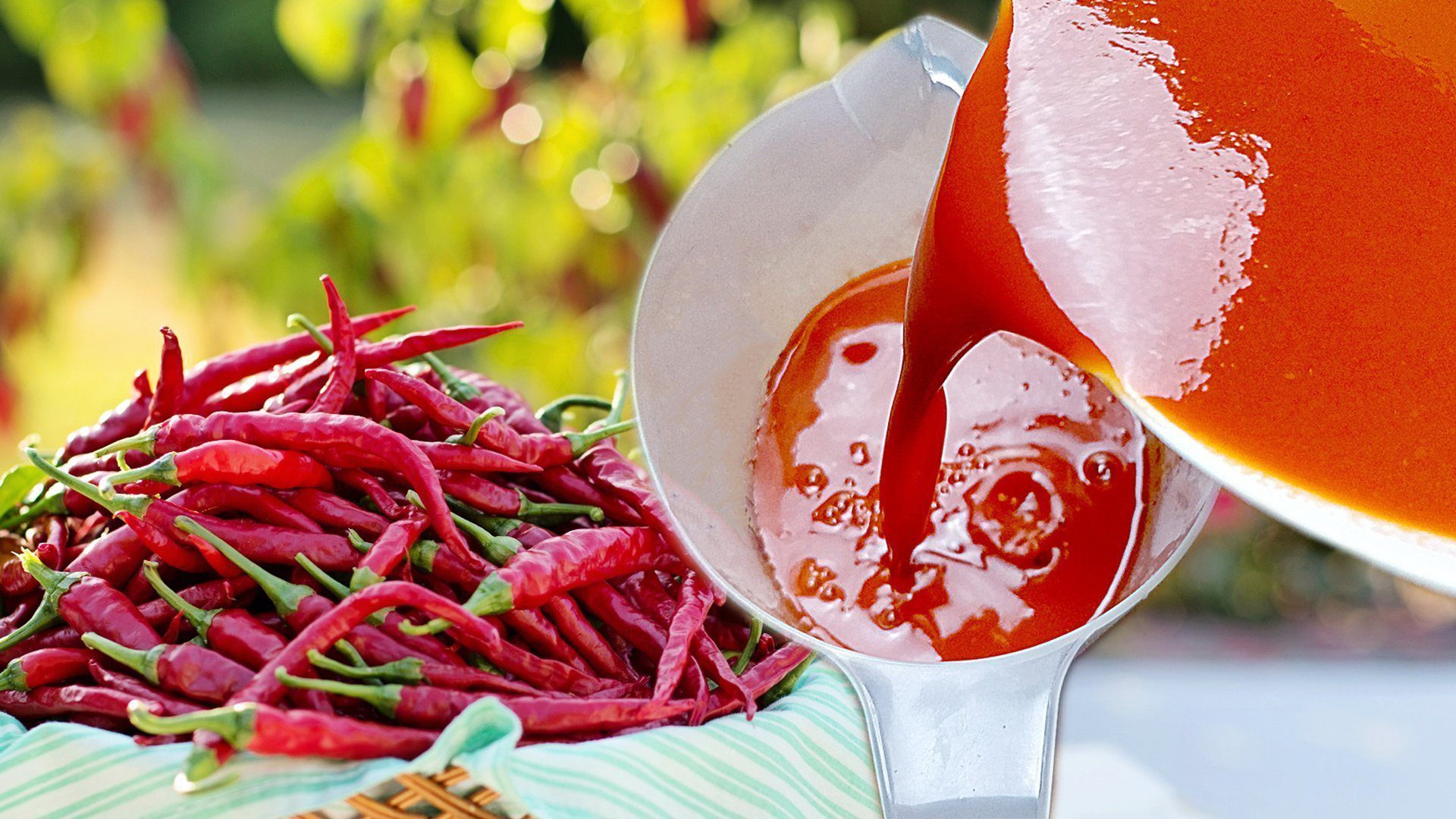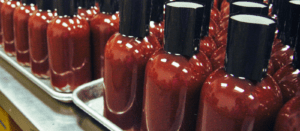Some of the links below are affiliate links, meaning that I will earn a commission if you click and make a purchase. This is at no extra cost to yourself.
Incorporating a pH tester into your hot sauce-making process is a game-changer! I would argue that it is in fact essential!
In this article, we’ll explore the importance of pH measurement in hot sauce production and guide you through choosing the best pH tester for your needs.
In many of my hot sauce making videos you will see me using a pH meter to test the acidity of the sauce. This is important from a safety perspective, especially when you are fermenting your chillies.
Article Index
Understanding pH: The Key to Safe and Delicious Hot Sauce

pH, short for “potential of hydrogen,” measures acidity or alkalinity. The pH scale ranges from 0 to 14, with 7 being neutral. Anything below 7 is acidic, and above 7 is alkaline.
For hot sauce creators, understanding pH is crucial, especially when fermenting chillies. We use the process of lactofermentation to ferment our chillies, and during fermentation, lactic acid increases acidity and lowers the pH.
This enhances safety and contributes to the savoury flavours we love in hot sauce. To delve deeper into the significance of acidity in hot sauces and ensure the safety of your creations, check out our comprehensive guide here.
pH Testing Strips vs Digital pH Testers: Choosing the Right pH Testing Method

You’ll encounter two standard methods when testing pH in hot sauce: pH testing strips and pH meters. While pH testing strips suffice for testing water or transparent liquids, they fall short for hot sauce applications. The accuracy of pH testing strips is questionable, and they struggle to provide the level of precision necessary for hot sauce making. Since hot sauces come in various vibrant colours, relying on pH meters is a more intelligent choice for accurate results.
Exploring the Best pH Testers: Finding Your Perfect Match
One feature to look for in a pH meter is automatic temperature compensation (ATC). Temperature can affect the results you get. ATC takes away the guesswork!
We’ve tried and tested several options to aid you in your search for the ideal pH meter, considering both functionality and affordability. Here are our top recommendations:
- Yellow Generic pH Meters: These stick-style pH meters, available from brands around £10, serve as an entry-level option. While they are suitable for hydroponics, they lack the features necessary for precise hot sauce measurements.
- Essentials pH Meter: Designed with more advanced features, the Essentials pH Meter offers quicker results and requires less frequent calibration. Although the accuracy remains similar to the yellow generic meters, the improved functionality is worth the upgrade.
- Apera Instruments PH20: Our current top choice, the Apera Instruments PH20, balances price and performance. Along with the essential features, this meter comes in a convenient kit with calibration solutions. We are thoroughly satisfied with the PH20 and have no immediate plans for further upgrades.
Calibrating your pH Tester
Calibrating your pH meter is an essential step to ensure accurate and reliable readings. I would recommend following the instructions you get with your pH meter, but here is a step-by-step guide on how to calibrate your pH meter:
- Gather the necessary materials: Before starting the calibration process, make sure you have the following items:
– pH meter
– pH calibration solutions (pH 4.00, pH 7.00, and pH 10.00)
– Distilled or deionized water
– Clean container or beaker - Rinse the pH electrode: Rinse the electrode with distilled or deionized water to remove any residue or contaminants from previous use. Gently blot the electrode dry with a clean tissue or lint-free cloth.
- Prepare the calibration solutions: Pour a small amount of each pH calibration solution into separate clean containers or beakers. It is essential to use fresh calibration solutions that are not expired.
- Start with pH 7.00 calibration solution: Immerse the pH electrode into the pH 7.00 calibration solution. Ensure that the electrode is fully immersed, and the solution covers the bulb at the bottom. Allow the reading to stabilize, which may take a few seconds.
- Adjust the pH meter: Once the reading stabilizes, adjust the pH meter to read pH 7.00 by either turning the calibration knobs or using the calibration settings on the meter. Follow the manufacturer’s instructions for your specific pH meter model.
- Rinse the electrode: Remove the electrode from the pH 7.00 calibration solution and rinse it with distilled or deionized water. Blot it dry gently.
- Repeat the process for pH 4.00 and pH 10.00: Follow the same steps for the other calibration solutions (pH 4.00 and pH 10.00). Immerse the electrode in the respective solution, wait for the reading to stabilize, and calibrate the meter accordingly. Rinse the electrode with distilled or deionized water after each calibration.
- Check the slope and offset: Some pH meters allow you to check the slope and offset values after calibration. The values should be within an acceptable range specified by the manufacturer. If not, consult the manual or contact the manufacturer for troubleshooting.
- Store the electrode: Once the calibration is complete, store the pH electrode properly according to the manufacturer’s instructions. Proper storage will help maintain the electrode’s performance and prolong its lifespan.
Remember, regular calibration is essential to maintain the accuracy of your pH meter. It is recommended to calibrate before each use or at least once a week, depending on the frequency of use and manufacturer’s instructions.
Maximising the Lifespan of Your Handheld pH Meter
Regardless of your pH meter, proper care and storage are crucial for longevity. Prevent the tip from drying out, as this can damage the device. A few drops of storage solution in the cap will suffice. Additionally, ensure you have calibration solutions—specifically a 7.0pH and a 4.0pH solution—for a two-point calibration process. Here are some tips for proper care and storage of a pH meter:
- Clean the tip
After each use, clean the pH electrode tip with distilled water or an appropriate cleaning solution. Avoid using tap water or touching the tip with your fingers as this can contaminate the electrode. - Prevent drying out
Make sure the tip of the electrode does not dry out, as it can cause damage. Keep it immersed in storage solution or place a few drops of storage solution in the cap. - Use calibration solutions
Regular calibration is essential for accurate pH measurements. Have both a 7.0pH and a 4.0pH calibration solution on hand for a two-point calibration process. Follow the manufacturer’s instructions for calibration. - Store properly
When not in use, store the pH meter in a clean and dry environment. Some meters may come with a protective case or cover that can be used for storage. Ensure that the storage area is away from excessive heat, moisture, and direct sunlight. - Avoid extreme temperatures
pH meters are sensitive to extreme temperatures. Do not expose them to extreme cold or heat, as it can affect their accuracy and performance. - Handle with care
pH meters are delicate instruments, so handle them carefully. Avoid dropping or mishandling the device to prevent damage to the electrode and other components. - Regularly check the electrode condition
Inspect the electrode for any signs of damage, such as cracks or contamination. If you notice any issues, follow the manufacturer’s guidelines for maintenance or contact customer support for assistance.
By following these care and storage tips, you can prolong the lifespan of your pH meter and ensure accurate measurements.
Become a Hot Sauce Maestro with a pH Meter
With the proper pH meter, you can master the art of creating perfectly balanced hot sauces. Say goodbye to guesswork and embrace precision in your hot sauce-making process. By using a pH meter, you can accurately measure the acidity levels in your hot sauces. This is important because acidity not only impacts the flavor of the sauce but also affects its safety and shelf life. To create a consistently balanced and safe hot sauce, it is essential to maintain a specific pH range.
Here’s how the proper pH meter can help you achieve this goal:
- Accurate Measurements
Guesswork can result in inconsistent acidity levels, making it difficult to replicate successful batches. With a reliable pH meter, you can measure the exact pH level of your hot sauce, ensuring consistent results every time with an accurate reading. - Adjusting the Recipe
By measuring the pH, you can identify the current acidity level of your sauce and adjust the recipe accordingly. If it’s too acidic, you can add a base ingredient to balance it out. If it’s not acidic enough, you can add more acidic ingredients like vinegar or citrus juice. - Ensuring Safety
Acidity is crucial for food safety, as it inhibits the growth of harmful bacteria. By using a pH meter, you can ensure that your hot sauce falls within the safe pH range, typically below 4.6 for shelf-stable products. This helps prevent spoilage and guarantees a shelf stable product when you bottle your hot sauce. - Consistency in Flavour
The acidity level impacts the overall taste of your hot sauce. Different pH levels can result in varying levels of tanginess or sharpness. With the help of a pH meter, you can maintain consistent acidity, thereby ensuring a consistent flavor profile in your hot sauces. - Extending Shelf Life
A properly balanced pH level in hot sauces contributes to their longevity. By creating a sauce with the right acidity, you can increase its shelf life and avoid early spoilage. This is especially crucial if you plan to sell or distribute your hot sauce commercially.
Conclusion to pH Meters for Hot Sauce
Using a pH meter to test the pH eliminates the guesswork involved in creating well-balanced hot sauces. It helps you achieve precision, consistency, and safety when making hot sauce. Making sure that making your own hot sauce is a rewarding and safe process.
Elevate your hot sauce game with a pH meter as your essential tool. Achieve perfectly balanced sauces and unleash your creativity as a hot sauce maestro. No more guesswork—embrace precision in every batch. Explore our comprehensive guide to pH meters for hot sauce making and find the perfect match for your needs.
Chillichump.com provides many hot sauce resources, including expert tips, recipes, and the highest-quality pH meters for enthusiasts like you. Explore our collection today, subscribe to our newsletter and elevate your hot sauce game to new heights!









Hi Chilli Champ,
Commenting here as there is no article about your ferminator.
You got small fan for hot air distribution inside fridge. Do you mix only internal air or have fresh air input.
Explain please.
This will help me in projects I’m in – edible mushroom cultivation, which might be also interesting for you.
Fresh air circulation and proper humidity is crucial for species like shitake. Oyster mushrooms are less sensitive. But your fridge fermintor idea would work great for both I think.
I am pretty sure I mentioned in the video, the fan is not for bringing external air in. It only turns on when the heating is on. It is there so that the heat distributes better inside the Ferminator, so there aren’t hot and cold spots.
Thanks!
Thank you for the ph advice I was concerned hot to clean them as I will be making hot sauces
Hi Chillichump, thanks for sharing this.
I have just ordered the same Apera PH20 device you use, and noticed the box doesn’t come with a storage solution. Is it essential to purchase this separately, or does this particular device not really need one?
Cheers!
Hey Jim, I would recommend getting some storage solution. This is the one I use: https://geni.us/phstorage
While you could get away with using a few drops of tap water…I would rather ensure the longevity and accuracy of it by using the proper stuff.
Hi Chillichump, do you have a way of testing how hot your hot sauce is other than tasting?